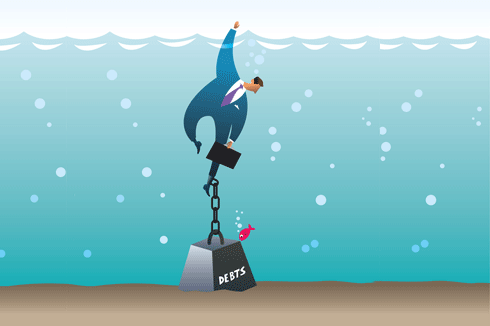
Get rid of your debt faster with debt relief
Choose your debt amount
Or speak to a debt consultant 844-731-0836
- 3 min read
Debt Reduction Help
Debt reduction help begins at home. Depending on your specific situation, it is possible to tackle your debt on your own without the need of debt help services. Here are the steps to handling your debt on your own.
Step 1. Sort Your Spending
Before you can start to attack your debt, you need to first look at your spending habits. You want to separate those payments you need to make (like mortgage, car, and insurance payments) and see what other expenses you have throughout the month. You'll find that a lot of those "other" expenses are frivolous, such as going to the movies, dining out, and purchasing unnecessary luxury items (e.g. expensive shoes, watches, televisions, etc.). If you want to pay off your debt, you're going to have to make a few sacrifices (e.g. stop eating out, reduce your cable TV to just the basic package, etc.). Once you have an idea of how you're spending your money each month, you then need to see what you're buying using your credit cards.
Step 2. Tackle the Credit Card
Credit cards are what get a lot of people in trouble. They simply charge items without regard to how they expect to pay for the charges later. This is very dangerous and if it's not stopped, it can result in an uncontrollable amount of debt. So, after you sort your spending, the next step is to see what expenses you're charging on your credit card. If at all possible, you should never charge your "must pay" expenses. If you charge your electrical bill, you're merely transferring your debt from one company to another, and not paying it down. Pay your mortgage, car payments, and other necessities via your paycheck. If you are charging them and you do have the cash to pay for them each month, STOP CHARGING! Pay for them outright. The reason you're in debt is probably because your credit card charges are getting out of hand. By not charging your "must pay" items, you can ensure that your monthly "must pay" debt is truly getting paid down and not just getting transferred to your credit card company.
NOTE: If there is no way you can pay for your "must pay" items without charging them, you have too much debt. Your income is less than your total debt. This is commonly known as your debt to income ratio. You want your income to be higher than your debt, and the way to do this is to either increase your income or decrease your debt (e.g. sell that extra car/boat/RV or cancel the movie channel package on your cable TV plan).
Step 3. Cut Back Where you Can
After you've established your spending habits and what you charge on your credit card, it's time to start cutting back. Take a look at your last credit card statement. What items are on there? Are there any charges that were not "necessary charges"? The occasional medical or car repair expense can't be avoided so don't worry about those. What you want to look for are expenses like clothing, restaurants, movies, and non-essential big-purchase items like televisions and sporting event tickets. These are the items you need to cut back on. Remember, if you want to get out of debt, you're going to have to make some sacrifices. That means no more going out to eat or to the movies. No new clothes for a while. You need to cut back as much as you can so that you can put as much of your funds towards paying off your debt. If you don't cut back, you'll just be adding to it.
For further debt reduction help, check out the Bills.com Debt Relief Boot Camp.

Get rid of your debt faster with debt relief
Take the first step towards a debt-free life with personalized debt reduction strategies.
Choose your debt amount
Or speak to a debt consultant 844-731-0836